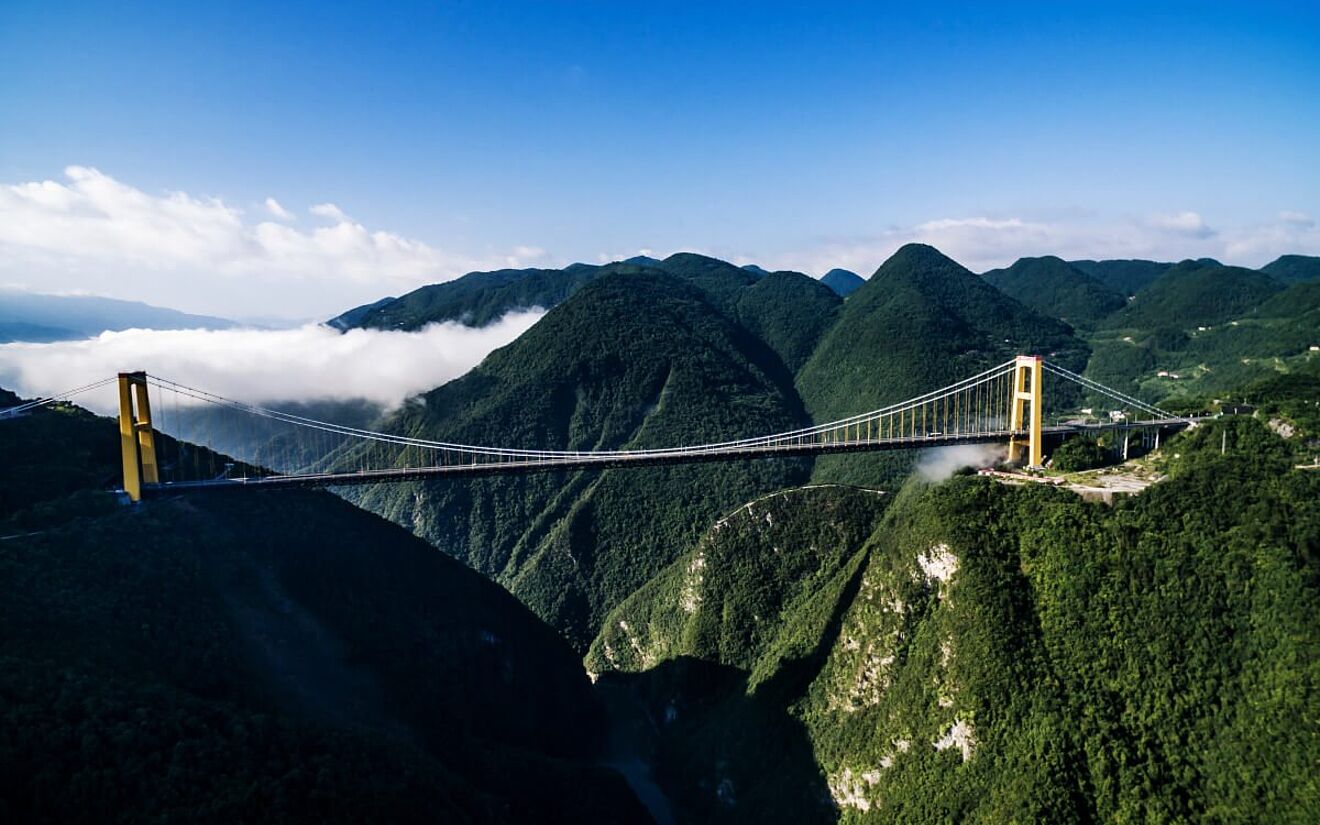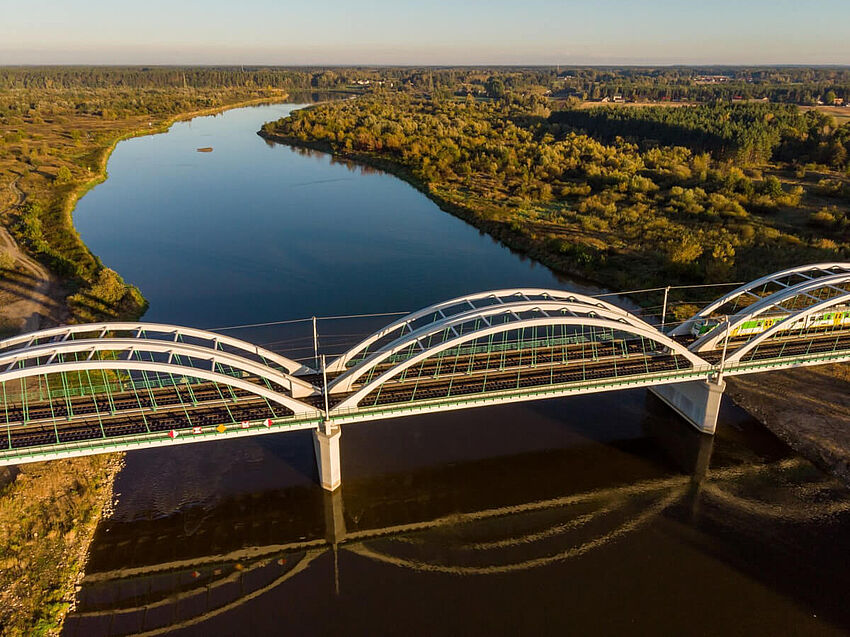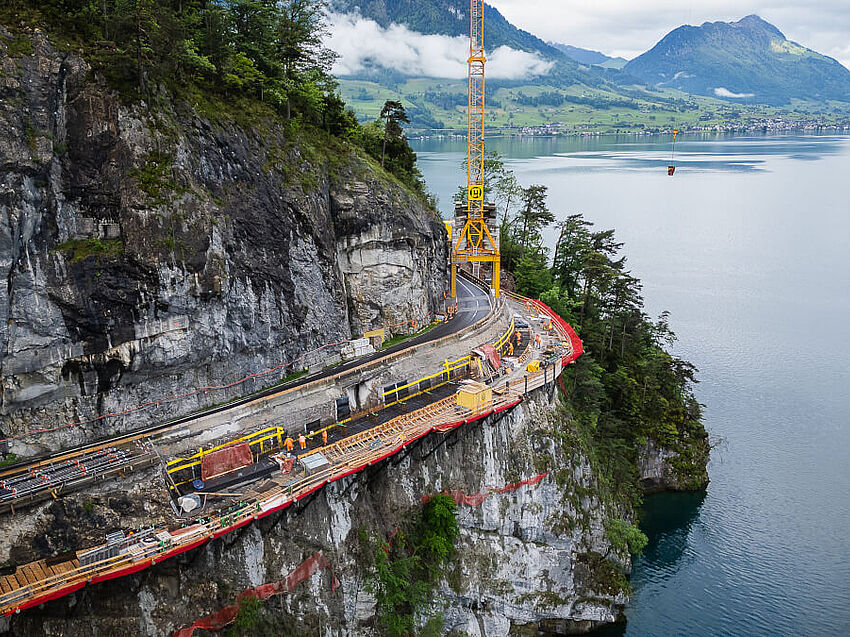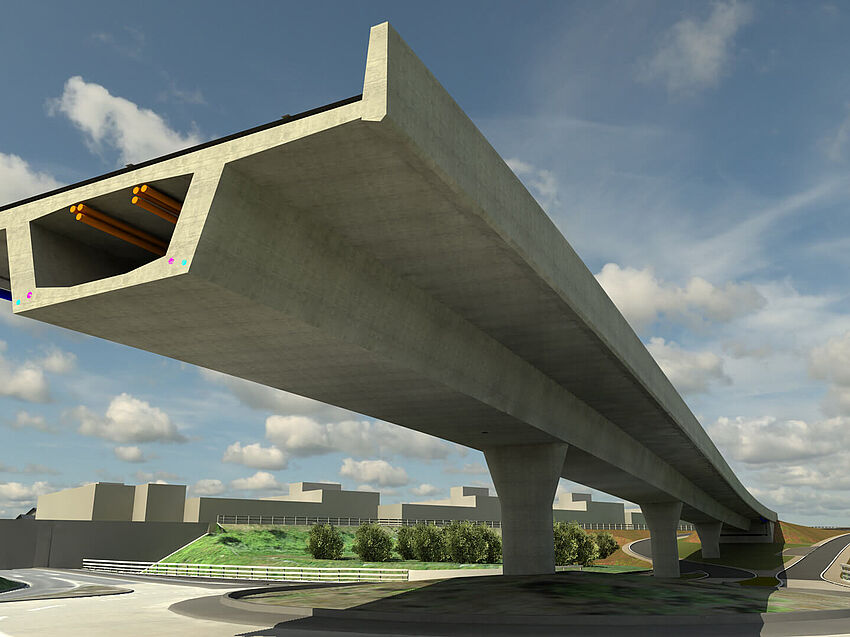From Design to Field: How ALLPLAN Civil Streamlined a Complex Highway Project in Romania
Whether 400 or over 600 meters, no gorge is too deep for the highest bridges in the world. In this list, we show which bridges currently occupy the top spots, why they all span Chinese gorges, and what makes these structures so special.
Why China’s gorges are breaking bridge records
Superlatives in bridge construction rarely arise purely by chance. They are an expression of technical ambition, national strength – and sometimes also a question of prestige. But even if the desire to set records plays a role, the world’s highest bridges usually serve very specific, practical purposes. They overcome enormous differences in altitude, connect remote regions, and create transport links where traditional road construction reaches its limits.
Our search inevitably leads us to China. Nine of the ten highest bridges in the world are now located there – a ratio that is hardly any different when it comes to the top 100. In fact, China claims all five top spots for itself. But why is that the case? In addition to having extremely mountainous regions with deep valleys, the country’s targeted expansion policy also plays a central role.
Roads and railways require significantly less space in the form of bridges than in traditional civil engineering – up to 2.9 hectares of land can be saved per kilometer of railway line. In addition, important traffic arteries can be routed through densely built-up regions without displacing buildings or cutting off neighborhoods from each other. These mostly prefabricated structures enable rapid construction and comparatively simple maintenance.
It is therefore no coincidence that the world’s highest bridges are being built precisely where topography, technology, and planning policy come together.
1st place: Huajiang Canyon Bridge
Since summer 2025, the Huajiang Canyon Bridge has held the title of “highest bridge in the world.” Its deck is 625 meters above the valley floor of the Beipan Jiang in Guizhou, China. This puts it well ahead of the previous record holder.
The bridge has a total length of 2,890 meters, with an impressive main span of 1,420 meters. Two pylons with a height of up to 262 meters support the central bridge segment, which hangs freely between them over the gorge.
This construction was made possible by industrial prefabrication and efficient manufacturing methods. The bridge opened to traffic at the end of June 2025 and marks a new technical milestone in global bridge construction. The world’s highest bridge thus remains in China – a technical masterpiece at the limits of what is feasible.
2nd place: Beipanjiang Bridge (Duge Bridge)
At a height of 565 meters above the valley floor of the Beipan Jiang, the Beipanjiang Bridge – also known as Duge Bridge – was considered the highest bridge in the world for many years. It is located on the border between the Chinese provinces of Guizhou and Yunnan and was opened to traffic in 2016 as part of the Hangzhou–Ruili Expressway (G56).
The cable-stayed bridge has a total length of 1,341 meters. Its main span of 720 meters crosses the valley between two pylons, the eastern one of which, at around 269 meters high, is one of the highest in the world. The middle part of the bridge deck is designed as an open steel truss structure, flanked by massive concrete beams at both ends.
Even though it has since lost its top spot, the Beipanjiang Bridge remains a milestone in bridge construction – both from a technical point of view and because of its location in one of China’s most spectacular mountain valleys. As the second-highest bridge in the world, it’s an impressive example of how efficiently engineering and topography can work together.
3rd place: Siduhe Bridge
The Siduhe Bridge near Yesanguan in the Chinese province of Hubei is one of the pioneering structures in modern bridge construction. Its roadway runs 496 meters above the river – close to the 500-meter mark. When it opened in 2009, it was the highest bridge in the world and topped the ranking for seven years.
The suspension bridge is part of the important Shanghai–Chongqing highway and spans the narrow Siduhe Valley at a length of around 1,100 meters. If you include the outer anchorage points, it measures as much as 1,222 meters. Its main span between the pylons is 900 meters – a remarkable dimension that set new standards at the time.
The construction method in particular attracted attention: the first suspension cable was not pulled in with an auxiliary cable as usual, but instead was shot across the gorge with the aid of a military rocket – a first in bridge construction. This innovative method was later adopted for other projects, such as the Puli Bridge.
4th place: Puli Bridge
Steep gorges and difficult terrain characterize the region around Pulixiang in Yunnan – here, the Puli Bridge spans the valley of the same name at a height of 485 meters. It was completed in 2015 and is part of the Hangzhou–Ruili highway, which forms an important east-west connection in southern China.
The suspension bridge measures a total of 1,040 meters, with a main span of 628 meters. Its hybrid construction is particularly striking: between the pylons runs a steel box girder with an aerodynamic profile, which is connected to the suspension cables via double steel rods. The ends of the bridge consist of reinforced concrete slab beams supported by massive pillars.
The Puli Bridge is one of the most technically sophisticated hybrid structures in the Chinese high mountains – an example of how building designs can be flexibly adapted to the conditions of extreme landscapes.
5th place: Jinshajiang Bridge-Jin’an
Since 2020, one of China’s most impressive suspension bridges has spanned the Jinsha Jiang – the upper reaches of the Yangtze River – in Yunnan Province. Its official name is Jinshajiang Bridge-Jin’an, but it is usually simply referred to as Jin’an Bridge. The roadway is 461 meters above the valley floor, currently ranking it fifth in the world’s highest bridges.
However, this ranking is not guaranteed to remain unchanged: the bridge runs above the Jinanqiao Dam, whose reservoir can raise the river level by up to 126 meters. At maximum water level, the effective height drops to 335 meters and the bridge temporarily falls out of the top 15 highest bridges.
The Jin’an Bridge is part of the Chengdu–Lijiang highway and was built specifically to connect two remote mountain regions. It is another impressive example of how technical expertise and geographical challenges come together in modern bridge construction.
Why tall bridges are more than just record holders
The world’s tallest bridges are built where direct connections across rough terrain are needed. Their height is determined by geographical conditions and the goal of creating efficient, durable routes without major detours. They enable traffic in regions that were long difficult to access and shorten distances between previously remote locations. The world’s tallest bridges are proof that even the most demanding conditions can be transformed into functional infrastructure.




